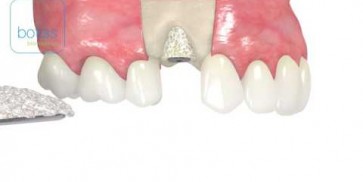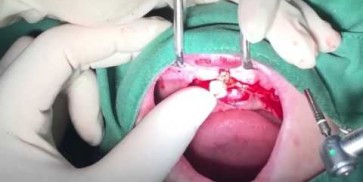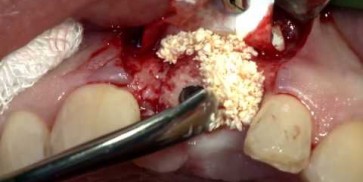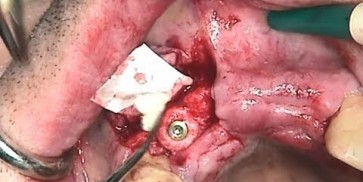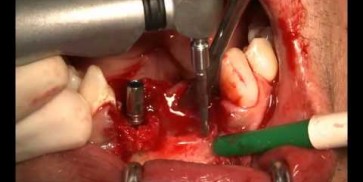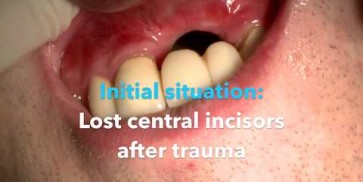
maxgraft® bonering
- Vertical augmentation (in combination with horizontal augmentation)
- Single tooth gap
- Edentulous space
- Sinus lift
|
- Ring-shaped spongiosa block from living donors
- Simultaneous implant placement and bone augmentation
- Significant reduction of treatment time
- Fast incorporation and complete remodeling to patients own bone
- No second surgical procedure necessary
- Storable at room temperature for 5 years
Art.-No. | Dimensions | Content | ||
|---|---|---|---|---|
33160 | height 10 mm, diameter 6.0 mm/3.3 mm (outer/inner diameter) | 1x cancellous ring | ||
33170 | height 10 mm, diameter 7.0 mm/3.3 mm (outer/inner diameter) | 1x cancellous ring | ||
33174 | height 10 mm, diameter 7.0 mm/4.1 mm (outer/inner diameter) | 1x cancellous ring | ||
Art.-No. | Dimensions | Content | ||
|---|---|---|---|---|
33000 | maxgraft® bonering surgical kit | 1 set | ||
33010 | bonering fix | 1 x | ||

Compared to the classical two-stage augmentation with bone blocks, this technique reduces the entire treatment period by several months and saves the re-entry. maxgraft® bonering is suitable for vertical and horizontal augmentation and promotes new bone formation, therefore simplifying the surgical treatment. With the maxgraft® bonerig surgical kit, botiss biomaterials provides all necessary instruments to apply the maxgraft® bonering technique. The kit includes two convenient sizes of trephines, which precisely match the maxgraft® bonering diameters. The planators allow the paving of the local bone to create a congruent and fresh contact surface of the implant area. The diamond disc and the diamond tulip can be used to shape maxgraft® bonering for an excellent adjustment to the local bone and for an improved soft tissue healing. Altogether, the adaptation of maxgraft® bonering with the instrument kit allows optimal preconditions for the bony ingrowth. All instruments are made of high-quality surgical steel.
Please find our free webinars at www.botiss-webinars.com
Kostenfreie Webinare zu Schulungszwecken finden Sie unter www.botiss-webinars.com
Please find our free webinars at www.botiss-webinars.com
Please find our free webinars at www.botiss-webinars.com
Please find our free webinars at www.botiss-webinars.com
Please find our free webinars at www.botiss-webinars.com
Please find our free webinars at www.botiss-webinars.com















